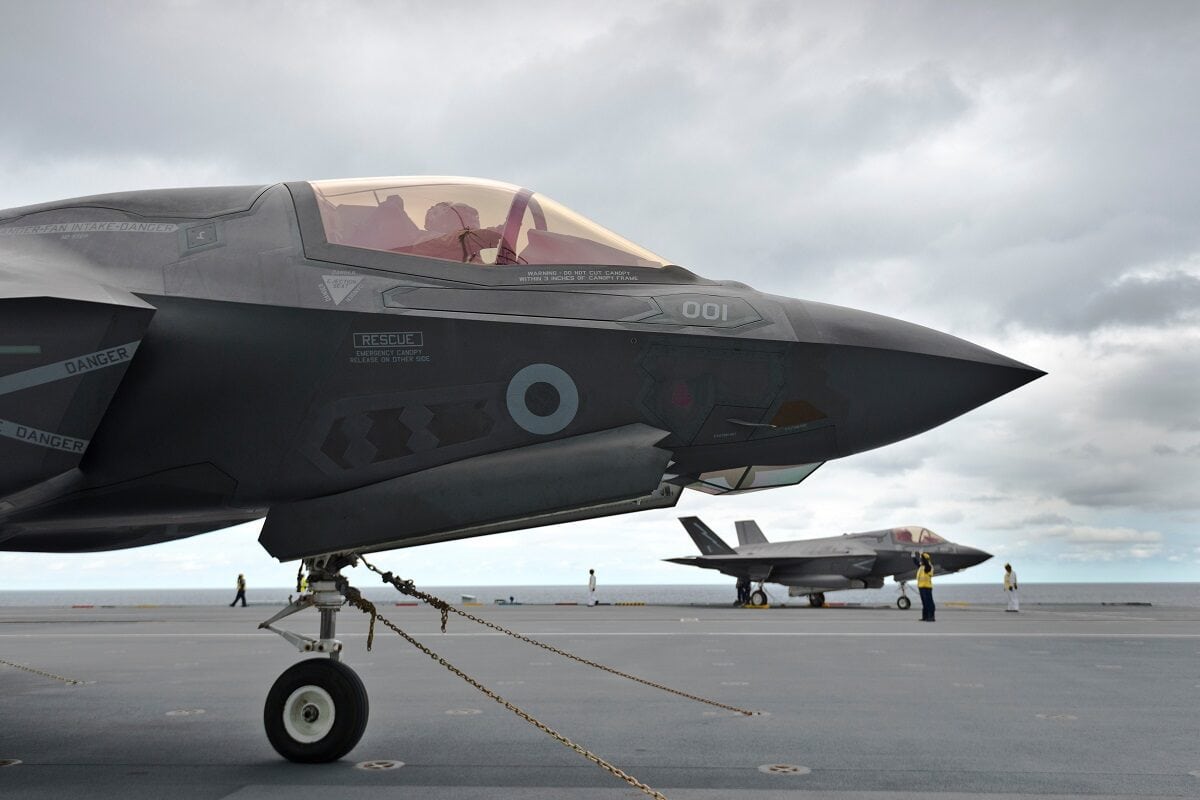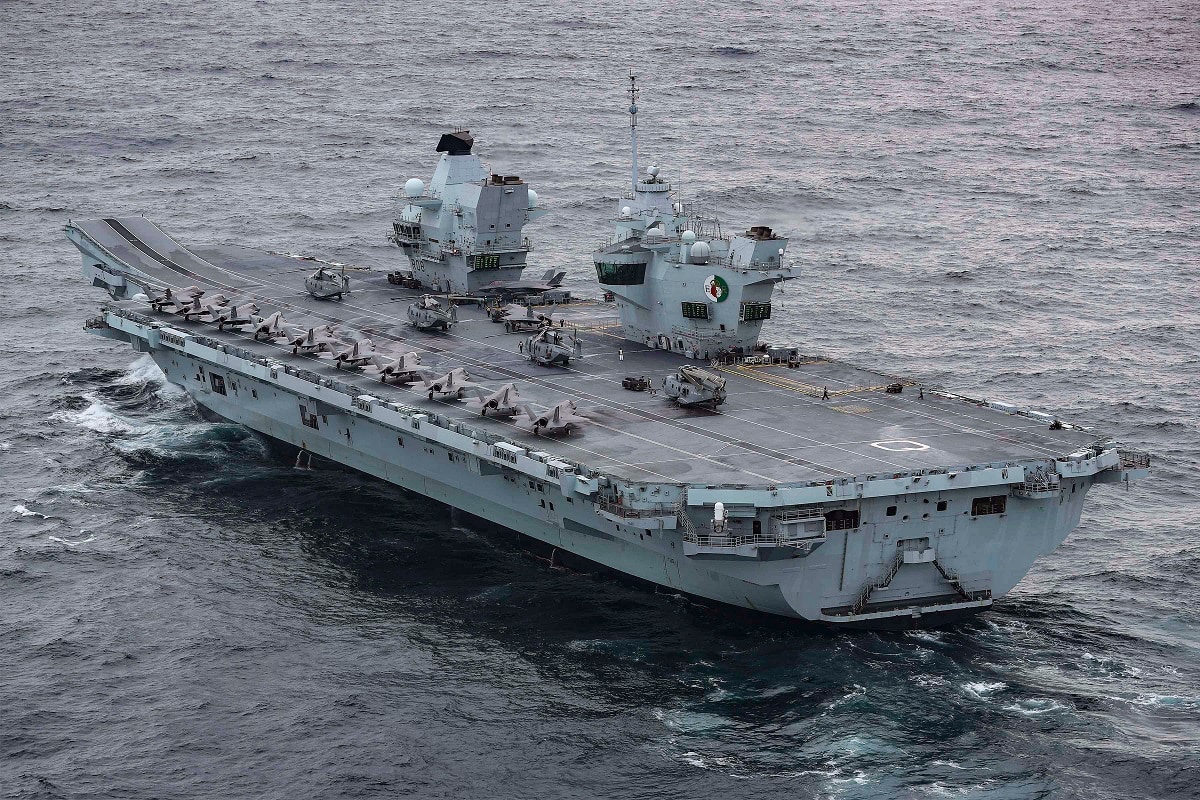Last month, after a Royal Navy warship had reportedly crossed into Russian waters, there were back and forth claims between Moscow and London. Russian officials said warning shots had been fired at the air-defense destroyer HMS Defender, while their British counterparts dismissed the claims. Now China is refuting a claim made by the Royal Navy that a UK aircraft carrier strike group spotted Chinese nuclear-powered submarines in the South China Sea as the People’s Liberation Army Navy (PLAN) boat shadowed the flagship carrier HMS Queen Elizabeth.
A war of words has also unfolded in the media of the respective nations.
On Tuesday, a Communist Party newspaper in China suggested that PLAN submarines used the carrier group for “target practice” before the boats “intentionally” revealed themselves to the Royal Navy vessels.
According to the UK’s Daily Express newspaper, two 7,000-tonne Type 093 Shang class submarines, which are armed with cruise missiles, had been located by specialists in the operations room of HMS Kent and HMS Richmond. Both are Type 23 Duke-class frigates – each named after British Dukes – and the class currently forms the core of the Royal Navy’s destroyer and frigate fleet, serving alongside the Type 45 destroyers. The warships were designed for anti-submarine warfare (ASW) and apparently are quite good in that regard as they detected the pair of subs that had been shadowing the carrier group from the South China Sea into the Western Pacific.
Operators aboard the frigates, which were reported to be working together in a sweep pattern, “pinged” the submarines. A third Type 093 submarine was also located by an Astute-class submarine that is operating with the Royal Navy’s flotilla. All of the PLAN submarines were reported to have been detected by their unique propeller sounds.
“This shows that our anti-submarine capabilities which declined significantly during Iraq and Afghanistan are back up to speed and doing what they’re supposed to be doing,” Rear Admiral Chris Parry told the Daily Express. “It’s good news.”
During the Falklands War, Parry was involved in the only sinking of an enemy submarine since World War Two, and he noted, “We always worry about submarines though we worry more about Russian boats because they are more advanced and quieter.”
Chinese Response
The Chinese Global Times disputed the Royal Navy’s claims that it successfully pinged the submarines, and said it was not credible. The news outlet quoted Song Zhongping, a military expert and TV commentator, who said many UK warships haven’t reached their full operational capability, and that the Royal Navy’s anti-submarine capability is limited.
“As a necessary measure of defense, it is possible that the PLA used the HMS Queen Elizabeth aircraft carrier strike group as an imaginary target for practice,” a submarine expert who asked not to be identified told the Global Times.
Another source said it was possible that the Chinese submarines may have intentionally revealed their locations after having accomplished their missions, thus sending a “warning” to the UK carrier group.
The PLAN currently has 66 submarines, more than the U.S. Navy or the Royal Navy, and while many are aging, the sub force has been used to project military power to influence nations across the Pacific.
Maiden Voyage Continues
The Royal Navy’s Queen Elizabeth carrier strike group (CSG) is currently on its maiden voyage to the Indo-Pacific and this week was conducting a port visit to Guam, while some of the carrier’s escorts – including Kent and Richmond – were docked at naval bases in Japan.
Beijing had protested the UK’s flagship carrier’s transiting of the South China Sea, but U.K. Defence Secretary Ben Wallace had told The Times of London last month that the Royal Navy’s warships would “sail where international law allows.”

UK F-35B operates from HMS Queen Elizabeth during Westlant 19 deployment, 21 Oct 2019

HMS QUEEN ELIZABETH ARRIVES IN GIBRALTAR FOR FIRST OVERSEAS VISIT
The Royal Navy’s new aircraft carrier HMS Queen Elizabeth will arrive in Gibraltar today for her first overseas port visit.
The 65,000 tonne future flagship will be conducting a routine logistics stop having left her home in Portsmouth last week for helicopter trials.
Images By PO PHOT Dave Jenkins
Wallace added, “It’s no secret that China shadows and challenges ships transiting international waters on very legitimate routes. We will respect China and we hope that China respects us.”
Peter Suciu is a Michigan-based writer who has contributed to more than four dozen magazines, newspapers and websites. He regularly writes about military small arms, and is the author of several books on military headgear including A Gallery of Military Headdress, which is available on Amazon.com.

